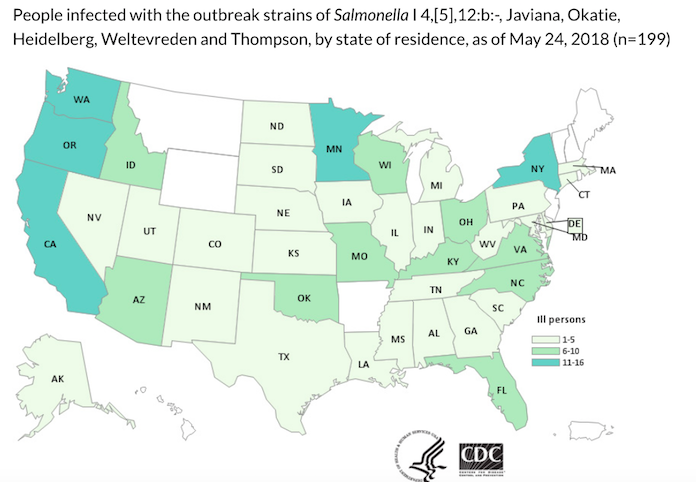The CDC has declared an end to a 41-state Salmonella outbreak linked to contaminated Kratom, but the FDA is advising consumers to continue to avoid kratom and products containing the leaves or extract of the plant because they pose serious health risks. The U.S. Food and Drug Administration (FDA) found at least one strain of Salmonella in 33 of the 66 kratom products that it tested and while 50 of the 199 people in this outbreak were so sick they needed to be hospitalized, Salmonella isn’t the greatest risk kratom poses, the agency says.
A native plant of South Asia, Kratom has been used in that part of the world as an alternative medicine pain reliever for hundreds of years but is now illegal in Thailand, Malaysia, Australia and some European countries. In the U.S., where 36 deaths have been linked to its use, some products are being marketed as treatments for chronic pain, digestive issues and symptoms of withdrawal from opioids but there are no FDA-approved uses for Kratom. In fact, the FDA says kratom is an opioid analogue and therefore should not be used to treat opioid withdrawal because it “affects the same opioid brain receptors as morphine” and “appears to have properties that expose users to the risks of addiction, abuse, and dependence.” The Drug Enforcement Agency considers kratom a “drug of concern.”
Kratom Salmonella Outbreak

In interviews with health officials, those sickened said they consumed kratom in pills, tea or powder form, which they purchased from retail locations and various online retailers, before they became ill. Most reported consuming the powder form.
The outbreak was first discovered in 2017 when CDC noticed a cluster of people infected with Salmonella I 4,[5],12:b:- . During the investigation, federal and state authorities collected and tested various leftover kratom products from case-patients’ homes and unopened kratom products and discovered several other Salmonella strains including Salmonella Heidelberg, Salmonella Javiana, SalmonellaOkatie, Salmonella Weltevreden, and Salmonella Thompson. They then looked back through the national database and found matches from people throughout the country who had been sickened by those strains. In total, health officials found 85 different DNA fingerprints of Salmonella bacteria in samples of kratom products. The FDA’s extensive report on the outbreak lists 37 recalled kratom products. But both agencies caution that some of these products may still be on the market.
If you have been sickened by a kratom product contaminated with Salmonella and would like a free consultation with a Salmonella lawyer, contact the experienced team at Pritzker Hageman. Our attorneys have represented clients in every major food poisoning outbreak during the last 20 years. There is no obligation and e don’t get paid unless we win.